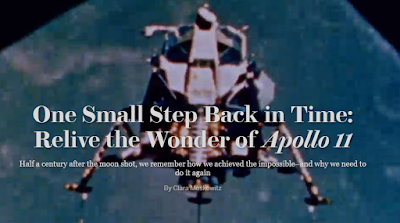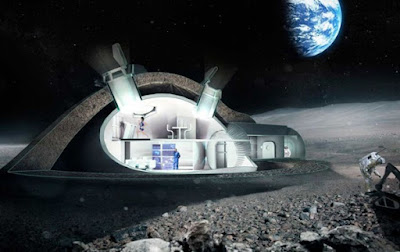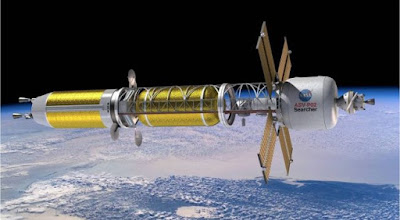 |
| Image source: link [1] below |
Topics: Civics, NASA, Space Exploration, Star Trek, STEM
The first time I ran into the notion of the moon landing being "faked," a young coworker showed me a grainy amateurish video on YouTube. I encountered it with a co-vendor at the IBM research facility I supported. To neither, both younger than me, did it matter that "I was there" and they weren't on the planet yet. Evidence and eye witness testimony did not move them from their stances.
Neil Armstrong thought he had a 50–50 shot at pulling it off. "There are so many unknowns," the first man to set foot on the moon said in a 2011 interview with an Australian accounting firm. “There was a big chance that there was something in there we didn’t understand properly and we [would have] to abort and come back to Earth without landing.” That he, Edwin “Buzz” Aldrin and Michael Collins—with the help of thousands of NASA engineers, scientists and mission controllers on Earth—did pull off a moon landing remains one of humanity's most incredible achievements.
Consider that 50 years ago this month a 36-story-tall Saturn V rocket weighing as much as 400 elephants climbed away from Earth atop an explosion more powerful than the output of 85 Hoover Dams. Once in space, the astronauts escaped Earth orbit, traveled to lunar orbit, then undocked part of their spacecraft and steered it down for a soft impact on an alien land. Perhaps even more impressive, after taking a walk around, they climbed back in their lunar lander, launched off the surface of another planetary body (another first), rejoined the command module orbiting roughly 60 miles above the lunar surface, and then flew back to Earth, splashing down safely in the Pacific Ocean two days later. [1]
The spin offs from the space industry technologically benefited America. Not since the king cotton era (fueled by the free, uncompensated slave labor of my ancestors) had the United States enjoyed such dominance in production, productivity and economic expansion. It would go on for decades, many young people inspired by NASA, Star Trek reruns and conventions to pursue STEM careers out of a passion for exploration, and birthing a more egalitarian society post previous sectarian divisions.
Exactly 50 years ago today, a Saturn V rocket launched from Kennedy Space Center carrying Neil Armstrong, Buzz Aldrin, and Michael Collins to the Moon. Four days later, Armstrong and Aldrin would land on the Moon and inspire a generation of young people to become scientists, engineers, and mathematicians.
The Apollo program's effect of inspiring America's children to pursue careers in STEM fields is one of the most powerful lasting legacies of the Moon race. Unfortunately, this effect seems to be coming to an end.
On the eve of the Apollo 11 anniversary, LEGO asked The Harris Poll to survey a total of 3,000 children in the United States, China, and the United Kingdom about their attitudes toward and knowledge of space. The results reveal that, at least for Western countries, kids today are more interested in YouTube than spaceflight. [2]
Entertainment and ambition looked upward: the notion of a three nacelle starship with a saucer section that could travel impossible speeds fueled imaginations. The notion of defying relativistic time dilation, traversing vast distances in human lifetimes propelled many of us into STEM to “do our parts” in getting at least close to this lofty goal. A fifth or tenth the speed of light to Proxima Centauri would achieve that aim. Any higher level physics class disabused us of attaining “warp speed,” but we could see the technological benefit and spin off of assisting in things that would promote the “Common Good” here on Terra Firma. We did not count on the divorce of productivity and cost of living wages, stagnant since the 1970s. We did not count on conspiracy theorists masking themselves as serious news pundits and influencing more than clicks or product purchases from their sites. We did not count on the rapidly increasing (and encouraged) income disparity. We did not count on politicians bought by wealthy families and corporations whose only about getting wealthier and more powerful in our lives. We did not count on science denial, climate or otherwise. Such a dysfunctional dystopia depends on selfies, self-centered attitudes and distractions, like supercomputers in our hip pockets sharing our suppers; websites that reinforce our views and cute cat videos. And we did not count on the cultural division encouraged by authoritarians the world over as their best means of controlling the masses.
It is in such a world young people would rather be YouTube personalities than starship captains.
My previous, gob-smacking encounters with my younger coworkers are now explained.
1. One Small Step Back in Time: Relive the Wonder of Apollo 11, Clara Moskowitz, Scientific American
2. American kids would much rather be YouTubers than astronauts, Eric Berger, ArsTechica



